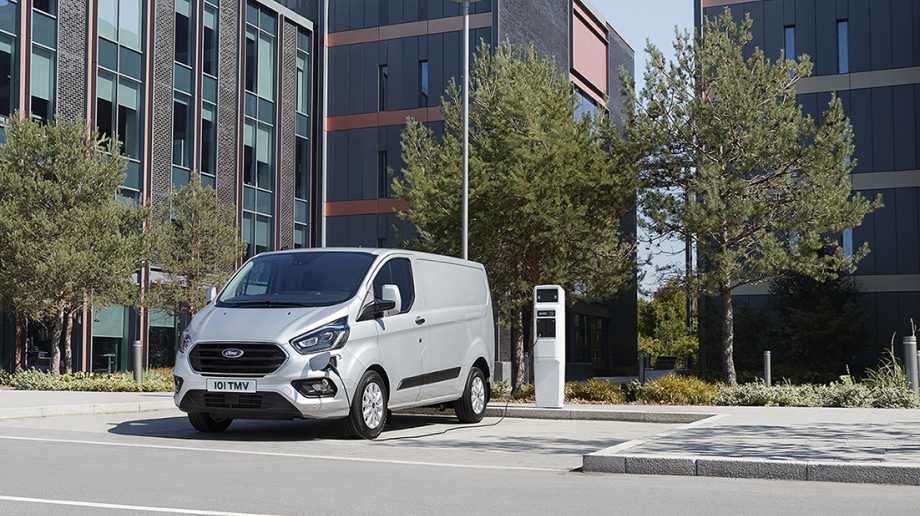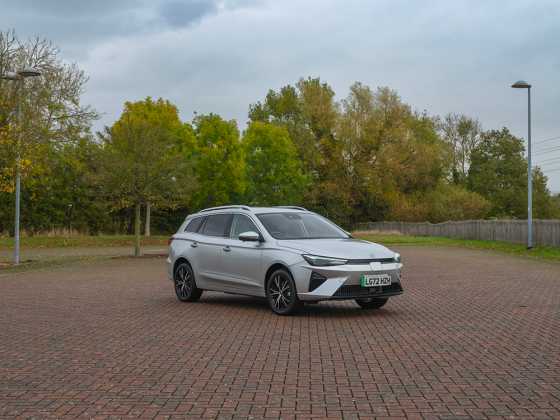Ford Transit Custom Limited PHEV

Plug-in hybrid technology tested in real world trials has resulted in Ford’s first electrified light commercial vehicle. Richard Gooding finds out how the Transit Custom PHEV debuts segment-first plug-in tech for both maximum usability and zero-emission running
What is it?
Ford’s cherished Transit nameplate has been around for 54 years. With the brand split into the one-tonne Transit Custom and two-tonne Transit ranges, a refresh this year has introduced mild hybrid technology, as well as a plug-in version of the smaller van. The first one-tonne PHEV in the segment, Ford employs range-extending technology for maximum usability for both the van and the passenger-carrying Tourneo Custom. The production version of the van was borne out of a 20-vehicle, year-long fleet prototype trial in London which covered over 150,000 miles. An impressive 75 per cent of central London miles were driven on electric power alone.
How practical is it?
The Ford Transit Custom PHEV is only available in the smallest ‘L1H1’ configuration. Clever packaging of the drivetrain under the load floor means carrying capacity isn’t compromised and is the same as the diesel-engined Transit Custom. That translates to a load volume of 6.0m3 and a net payload of 1,110kg.
Overall length is 4,973mm and the 2,933mm wheelbase allows a maximum loadspace length of 2,554mm up to the bulkhead, with a width of 1,775mm. There’s 1,406mm of room floor to roof, while the side door entry width is 1,030mm. The rear doors open to reveal 1,404mm of loading width.
What range does it have?
Ideal for urban use, the Transit Custom has an all-electric range of 35 miles (NEDC correlated), which increases to an overall distance of 310 miles once the range-extending petrol engine comes into play. The 1.0-litre EcoBoost three-cylinder unit only charges the 13.6kWh lithium-ion battery, extending the overall range – it never drives the wheels.
How long does it take to charge?
From a domestic 240-volt, 10-amp power supply, the plug-in Transit Custom’s battery can be topped up in 4.3 hours. Connected to a Type 2 AC fast charger, that time drops to 2.7 hours. Two-level regenerative braking and deceleration also capture electrical energy.
How does it drive?
Only a small ‘Plug-in Hybrid’ badge on the offside rear door and a covered charging port on the nearside of the front bumper differentiate the Transit Custom PHEV from its diesel siblings. In range-topping Limited specification, it’s a smart-looking machine. It’s slick inside, too, with high quality materials and Ford’s SYNC 3 eight-inch touchscreen technology adding increased levels of connectivity.
On the move, the silence of the smooth powertrain creates a calmer driving experience. As expected, there’s the usual all-electric instant torque from take-off – 247lb ft (335Nm) – and once on the move, refinement levels are as you’d expect from an electric vehicle, too. Four driving modes control the the available charge from the battery. Default ‘Auto EV’ decides when to activate the range-extender depending on driving conditions; ‘EV Now’ forces all-electric power; ‘EV Later’ prioritises the range-extender and uses regenerative charging to maintain the current level of battery charge for later use; and ‘EV Charge’ employs the range extender to power the van and top up the battery for later ‘EV Now’ travel.
The impressive ‘L’ regenerative braking mode makes a noticeable difference to the amount of regen available, and highly manoeuvrable, the Transit Custom PHEV is easy to thread through city streets.
What does it cost?
The entry-level Leader starts the Transit Custom PHEV range off, from £39,145 excluding VAT. Standard equipment includes air conditioning, DAB radio with USB/Bluetooth connectivity, and electric windows. The £40,595 Trend adds a body-coloured front bumper and mirrors, climate control, LED daytime running lights
and parking sensors.
The £42,950 Limited affords 16-inch alloy wheels, body-coloured door handles, side mouldings and rear bumper, heated seats, LED load compartment lights, and an alarm. The Transit Custom PHEV is also expected to be eligible for the government’s Plug-in Van Grant (PiVG) which deducts 20 per cent of the purchase price, up to a maximum of £8,000. All Transit Custom PHEVs have an eight-year/100,000-mile battery warranty.
How much does it cost to tax?
CO2 emissions are 60g/km for the Transit Custom PHEV, and as it has a petrol engine, it still attracts the standard £260 light goods vehicle VED charge. The Tourneo Custom and Kombi PHEVs emit 70g/km, but are not classed as commercials, so they incur the £25 passenger car rate in the first year.
Why does my fleet need one?
Expensive it may be, but the quiet and calm driving experience the Ford Transit Custom PHEV gives is preferable to any diesel. Arriving at a crucial time to take advantage of low and ultra-low emission zones, Ford believes its PHEV solution is the right one due to payload compromise and battery size. An all-electric Transit is under development, but it won’t arrive until 2021 at the earliest.
Perhaps not the ultimate electrified commercial, the Transit Custom PHEV’s long range makes eminently more usable than all-electric alternatives. As the current market stands, it’s an impressively capable answer to the low emission van question.









